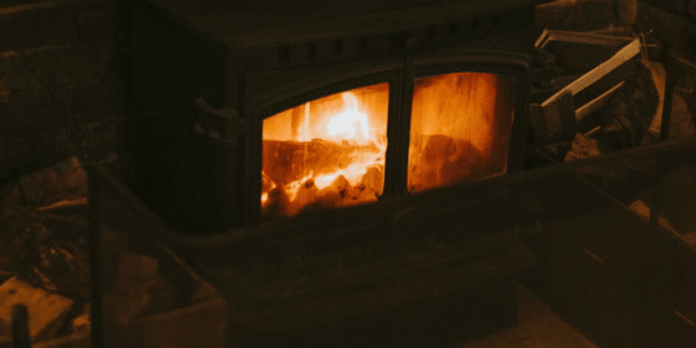A house is more than its outward appearance or the arrangement of stylish furniture within its walls. While décor undoubtedly adds personality and aesthetic appeal, true value in a home is not shaped by colors on the walls, designer lighting, or high-end furnishings. Instead, it lies in the systems that provide daily comfort, efficiency, and security for those who live inside. Comfort systems—heating, ventilation, air conditioning, plumbing, and insulation—are the backbone of livability. Without them, even the most elegantly designed spaces lose their allure.
Prospective buyers often walk through homes admiring the paint, flooring, and furniture placement, but their final decision is usually grounded in whether the property feels comfortable and functions seamlessly. A stylishly decorated home that lacks warmth in the winter, cooling in the summer, or reliable water pressure quickly loses its charm. In contrast, even a modestly decorated space becomes desirable when its comfort systems are dependable and efficient.
Read More:
- Ways to Get More Inspiration on How to Decorate Your Home
- The Everyday Comforts That Make a Big Difference at Home
The Furnace as the Heart of Home Warmth
Among all comfort systems, heating remains one of the most vital. The furnace ensures that residents can endure cold seasons without discomfort, making it indispensable to overall home value. Homebuyers often inquire about the age, type, and efficiency of the furnace before they ask about paint colors or window treatments. A well-maintained heating system reassures them that the property is not only livable but also cost-effective in terms of energy bills.
More importantly, reliable heating creates a sense of emotional security. There is nothing appealing about returning to a beautifully decorated living room if the temperature inside feels unbearable. This is where regular furnace maintenance plays a crucial role, ensuring that the system operates safely, efficiently, and without costly breakdowns. Prospective owners see this upkeep as a direct investment in long-term comfort, often willing to pay more for a home where such diligence is evident.
A furnace does more than heat; it protects pipes from freezing, preserves the integrity of the structure, and ensures year-round readiness.
Air Conditioning and the Quality of Summer Living
Cooling systems are equally significant when defining livability. An elegant home can quickly become intolerable without effective air conditioning during hot months. Buyers evaluate whether the system is modern, energy-efficient, and capable of maintaining consistent temperatures throughout the home. Centralized air conditioning is often viewed as a premium feature, with buyers calculating its long-term benefits in both comfort and cost savings.
A stylish dining room or living area may create an initial impression, but if potential owners feel stifled by heat, décor becomes irrelevant. Modern systems with programmable thermostats, zoning capabilities, and energy-efficient designs not only improve comfort but also elevate the property’s resale value.
Plumbing: The Hidden Indicator of Livability
Water is the lifeblood of any household. Showers, sinks, dishwashers, washing machines, and outdoor irrigation systems all rely on strong, reliable plumbing. While a visitor might admire a stylish bathroom mirror or elegant tiling, the homeowner values water pressure, drainage efficiency, and the absence of leaks far more.
Hidden beneath floors and walls, plumbing issues can silently diminish a home’s usability and value. A property with modernized plumbing commands higher offers because buyers understand the immense cost of replacing outdated or failing systems.
Insulation and Energy Efficiency
Another key comfort system is insulation. It does not stand out visually, but its impact is felt every day. Proper insulation regulates indoor temperatures, reduces energy bills, and enhances overall comfort. A home with good insulation maintains warmth during cold months and keeps interiors cooler during hot seasons. This reduces reliance on heating and cooling systems, directly lowering costs for residents.
Homebuyers increasingly prioritize energy efficiency, not only for financial reasons but also for environmental responsibility. Energy-efficient homes, bolstered by quality insulation, often command higher prices than comparable but poorly insulated properties.
Ventilation and Indoor Air Quality
Comfort does not stop with temperature regulation. Ventilation systems determine how fresh and healthy the indoor environment feels. Properly designed ventilation eliminates stale air, reduces humidity, and circulates fresh oxygen throughout the home. This directly affects health, minimizing respiratory issues and allergens.
Buyers are becoming more aware of indoor air quality, especially in tightly sealed modern homes. Without effective ventilation, air becomes stagnant, odors linger, and moisture creates conditions for mold growth.
Electrical Systems and Modern Functionality
Electricity powers nearly every aspect of contemporary living, from lighting to appliances to entertainment systems. While homeowners can enhance décor with lighting fixtures, the true measure of value lies in the safety and reliability of the electrical wiring behind the walls.
Buyers often look for updated electrical panels, sufficient outlets in each room, and systems capable of supporting modern technology demands. Outdated wiring not only diminishes property value but also poses safety risks.
The Shift in Buyer Priorities
In the past, real estate marketing often emphasized aesthetics—staged furniture, freshly painted walls, or trendy design choices. While these elements still attract initial attention, today’s buyers are more educated and practical. With access to online resources, inspection reports, and energy ratings, they are less swayed by surface-level appeal and more interested in the longevity and efficiency of comfort systems.
This shift reflects a broader awareness of the total cost of ownership. Buyers no longer evaluate a property solely on its purchase price; they also consider ongoing expenses for heating, cooling, water, and electricity.
Long-Term Resale Value
Another dimension where comfort systems outweigh décor is resale potential. Décor trends evolve quickly, and what looks fashionable today may seem outdated in a few years. Comfort systems, on the other hand, provide enduring value. A recently updated furnace, air conditioner, or plumbing system will appeal to buyers for many years, often increasing resale prices more significantly than cosmetic renovations.
Savvy homeowners understand this and prioritize system upgrades over purely decorative investments. Repainting walls or replacing cabinets may add short-term charm, but replacing an old furnace or upgrading insulation yields long-term returns that buyers recognize immediately.
Why Comfort Systems Are the True Foundation of Value
At its core, a home is a place of shelter, safety, and rest. Décor adds personality and style, but it cannot provide warmth, cooling, clean water, or breathable air. These are the functions that define whether a home is livable and enjoyable, making comfort systems the true foundation of value.
For this reason, homeowners who wish to protect or increase their property’s value should focus on the systems that provide comfort, security, and functionality. These investments not only enhance daily life but also ensure that when the time comes to sell, the property stands out as more than just a decorated space—it becomes a well-functioning home with enduring worth.

